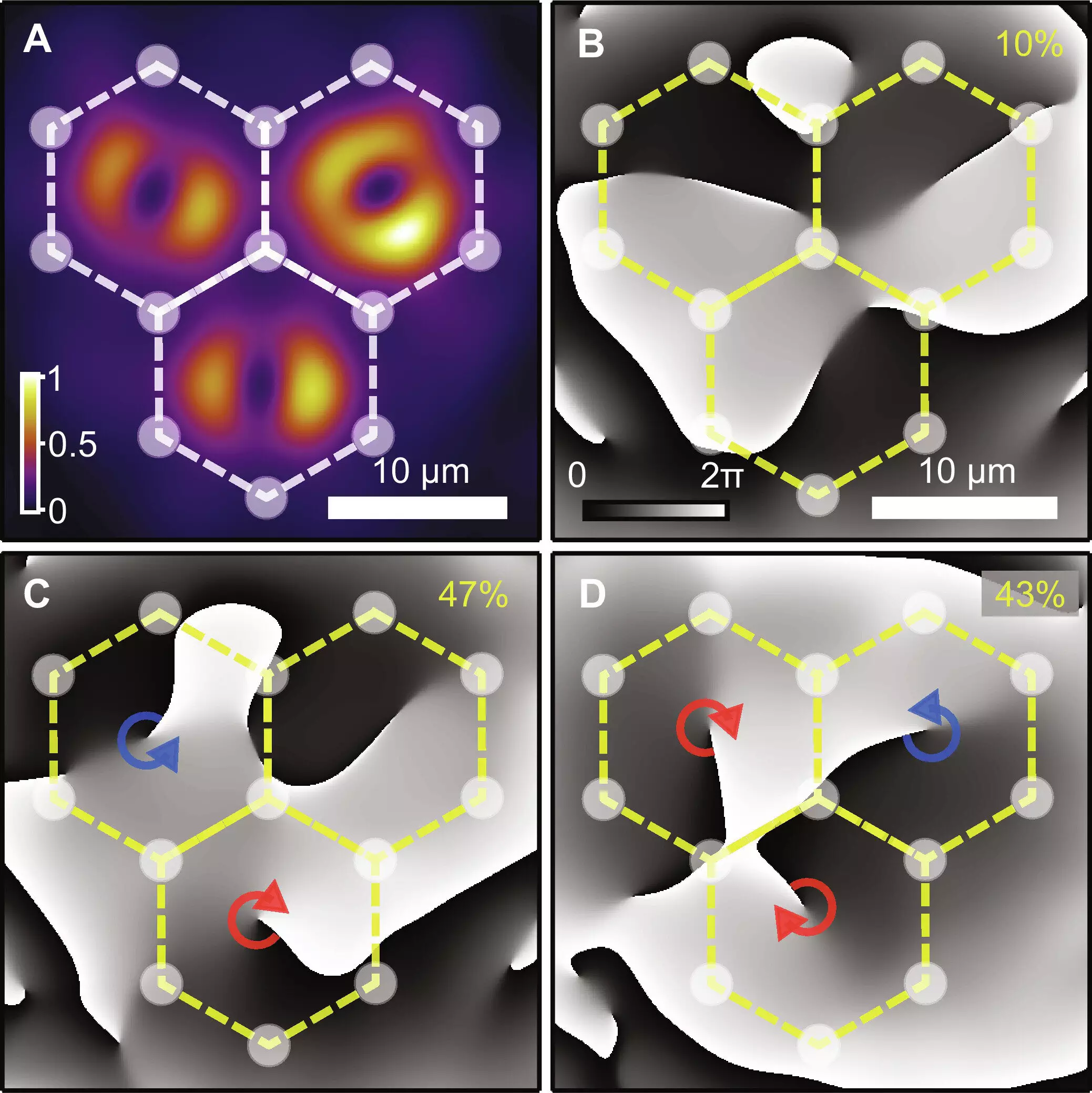Quantum vortices are a fascinating phenomenon that has been the subject of extensive study in recent years. A recent study conducted by researchers from Skoltech, Universitat Politècnica de València, Institute of Spectroscopy of RAS, University of Warsaw, and University of Iceland has shed new light on the spontaneous formation and synchronization of multiple quantum vortices in optically excited semiconductor microcavities. The findings of this study, which have been published in Science Advances, have significant implications for the study and simulation of condensed matter systems.
The researchers in this study utilized a semiconductor planar microcavity, which consists of two highly reflective mirrors with InGaAs quantum wells sandwiched in between. Under certain conditions, this setup leads to the formation of quasiparticles known as exciton-polaritons or microcavity polaritons. By optically exciting the semiconductor microcavity sample with a patterned laser beam, the researchers were able to create a triangular lattice with 22 cells containing trapped polariton condensates, each carrying a single-charge vortex.
The experiments conducted by the researchers revealed that the polariton quantum vortices formed in the neighboring cells of the optically generated lattices exhibited an interesting behavior. Specifically, these vortices tended to have an opposite topological vortex charge, leading to what the researchers describe as being “antiferromagnetically coupled.” This observation is significant as it demonstrates the synchronization of quantum vortices in a driven-dissipative system, which has not been previously shown.
One of the key challenges faced by the researchers was the statistical analysis of the experimental data to support their findings. By studying the physics of the condensates in both small clusters and larger triangular lattices of vortices, the researchers were able to uncover new insights into the behavior of the system. The data revealed a signature of extended antiferromagnetic order in the triangular lattice, indicating a deeper level of synchronization among the quantum vortices.
Implications and Future Research
The results of this study have opened up new avenues for research in the field of quantum vortices and condensed matter systems. The findings suggest that optically structured artificial lattices made up of coupled polariton vortices could serve as a valuable platform for studying and simulating complex phenomena. Future research in this area could focus on exploring the implications of the observed antiferromagnetic order in the vortex lattice and its potential applications in other systems.
The research conducted by the team of scientists from various institutions has provided valuable insights into the formation and synchronization of quantum vortices in semiconductor microcavities. By demonstrating the antiferromagnetic coupling of polariton quantum vortices, the researchers have expanded our understanding of these fascinating phenomena and paved the way for further exploration in this field.


Leave a Reply